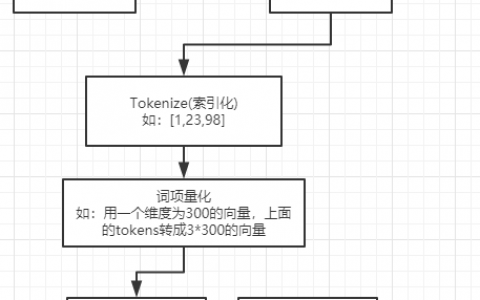安装 TensorFlow 是使用 TensorFlow 的第一步。在 Windows 上安装 TensorFlow 可能会有一些挑战,但是遵循正确的步骤和技巧,安装过程应该是相对简单的。本文将手把手教你安装 Windows 版本的 TensorFlow,并提供两个示例说明。
安装 Windows 版本的 TensorFlow
步骤1:安装 Anaconda
在 Windows 上安装 TensorFlow 的最简单方法是使用 Anaconda。Anaconda 是一个 Python 发行版,它包含了许多常用的 Python 包和工具。下面是安装 Anaconda 的步骤:
-
下载 Anaconda 安装程序:在 Anaconda 官网 上下载适合你的操作系统的 Anaconda 安装程序。
-
安装 Anaconda:运行下载的 Anaconda 安装程序,并按照提示进行安装。
步骤2:创建虚拟环境
在安装 TensorFlow 之前,我们需要创建一个虚拟环境。虚拟环境是一个独立的 Python 环境,它可以帮助我们避免不同 Python 包之间的冲突。下面是创建虚拟环境的步骤:
-
打开 Anaconda Prompt:在 Windows 上,可以通过在开始菜单中搜索“Anaconda Prompt”来打开 Anaconda Prompt。
-
创建虚拟环境:在 Anaconda Prompt 中,运行以下命令来创建一个名为“tensorflow” 的虚拟环境:
conda create -n tensorflow python=3.7
这将创建一个名为“tensorflow”的虚拟环境,并安装 Python 3.7。
- 激活虚拟环境:在 Anaconda Prompt 中,运行以下命令来激活“tensorflow”虚拟环境:
conda activate tensorflow
步骤3:安装 TensorFlow
在创建虚拟环境之后,我们可以安装 TensorFlow。下面是安装 TensorFlow 的步骤:
- 安装 TensorFlow:在 Anaconda Prompt 中,运行以下命令来安装 TensorFlow:
pip install tensorflow
这将安装最新版本的 TensorFlow。
- 验证 TensorFlow 安装:在 Anaconda Prompt 中,运行以下命令来验证 TensorFlow 是否已成功安装:
python -c "import tensorflow as tf;print(tf.reduce_sum(tf.random.normal([1000, 1000])))"
如果 TensorFlow 已成功安装,将输出一个随机数的总和。
示例1:使用 TensorFlow 计算两个数的和
下面是一个简单的示例,演示了如何使用 TensorFlow 计算两个数的和:
import tensorflow as tf
# 定义两个常量
a = tf.constant(2)
b = tf.constant(3)
# 计算两个数的和
c = tf.add(a, b)
# 创建会话并运行计算图
with tf.Session() as sess:
result = sess.run(c)
print(result)
在这个示例中,我们首先定义了两个常量 a 和 b,并使用 tf.add() 函数计算了它们的和。然后,我们创建了一个会话,并使用 sess.run() 函数运行计算图。最后,我们将计算结果打印出来。
示例2:使用 TensorFlow 训练一个简单的神经网络
下面是一个稍微复杂一些的示例,演示了如何使用 TensorFlow 训练一个简单的神经网络:
import tensorflow as tf
from tensorflow.examples.tutorials.mnist import input_data
# 加载 MNIST 数据集
mnist = input_data.read_data_sets('MNIST_data', one_hot=True)
# 定义输入和输出
x = tf.placeholder(tf.float32, [None, 784])
y = tf.placeholder(tf.float32, [None, 10])
# 定义模型
W = tf.Variable(tf.zeros([784, 10]))
b = tf.Variable(tf.zeros([10]))
y_pred = tf.nn.softmax(tf.matmul(x, W) + b)
# 定义损失函数和优化器
cross_entropy = tf.reduce_mean(-tf.reduce_sum(y * tf.log(y_pred), reduction_indices=[1]))
train_step = tf.train.GradientDescentOptimizer(0.5).minimize(cross_entropy)
# 定义准确率
correct_prediction = tf.equal(tf.argmax(y_pred, 1), tf.argmax(y, 1))
accuracy = tf.reduce_mean(tf.cast(correct_prediction, tf.float32))
# 创建会话并训练模型
with tf.Session() as sess:
# 初始化变量
sess.run(tf.global_variables_initializer())
# 训练模型
for i in range(1000):
batch_xs, batch_ys = mnist.train.next_batch(100)
sess.run(train_step, feed_dict={x: batch_xs, y: batch_ys})
# 计算准确率
acc = sess.run(accuracy, feed_dict={x: mnist.test.images, y: mnist.test.labels})
print('Accuracy:', acc)
在这个示例中,我们首先加载了 MNIST 数据集,并定义了输入 x 和输出 y。然后,我们定义了模型的权重 W 和偏置 b,并使用 tf.nn.softmax() 函数定义了模型的输出 y_pred。接着,我们定义了损失函数 cross_entropy 和优化器 train_step。然后,我们定义了准确率 accuracy。最后,我们创建了一个会话,并使用 sess.run() 函数训练模型,并计算了模型的准确率。
总结:
以上是手把手教你安装 Windows 版本的 TensorFlow 的完整攻略。在 Windows 上安装 TensorFlow 的最简单方法是使用 Anaconda,并创建一个虚拟环境。然后,我们可以使用 pip install tensorflow 命令安装 TensorFlow。本文还提供了两个示例,演示了如何使用 TensorFlow 计算两个数的和和训练一个简单的神经网络。
本站文章如无特殊说明,均为本站原创,如若转载,请注明出处:手把手教你安装Windows版本的Tensorflow - Python技术站

 微信扫一扫
微信扫一扫  支付宝扫一扫
支付宝扫一扫 

